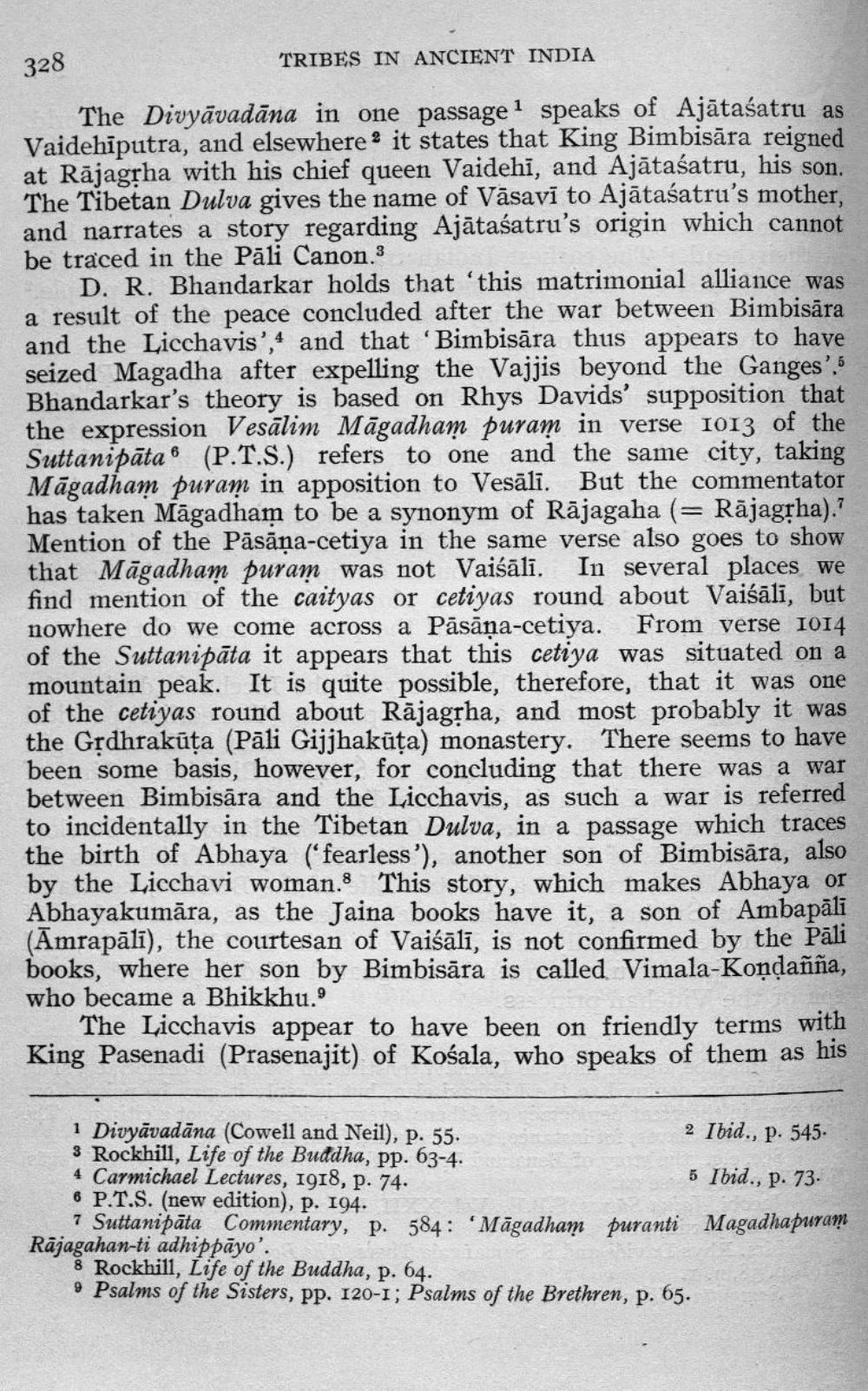________________
328
TRIBES IN ANCIENT INDIA
The Divyāvadāna in one passage 1 speaks of Ajātasatru as Vaidehīputra, and elsewhere? it states that King Bimbisāra reigned at Rājagrha with his chief queen Vaidehī, and Ajātaśatru, his son. The Tibetan Dulva gives the name of Vāsavī to Ajātaśatru's mother, and narrates a story regarding Ajātaśatru's origin which cannot be traced in the Pāli Canon.3
D. R. Bhandarkar holds that 'this matrimonial alliance was a result of the peace concluded after the war between Bimbisāra and the Licchavis',4 and that Bimbisāra thus appears to have seized Magadha after expelling the Vajjis beyond the Ganges' Bhandarkar's theory is based on Rhys Davids' supposition that the expression Vesālim Māgadham puram in verse 1013 of the Suttanipāta 6 (P.T.S.) refers to one and the same city, taking Māgadham puram in apposition to Vesāli. But the commentator has taken Māgadham to be a synonym of Rājagaha (= Rājagțha). Mention of the Pāsāņa-cetiya in the same verse also goes to show that Māgadham puram was not Vaiśāli. In several places we find mention of the caityas or cetiyas round about Vaiśāli, but nowhere do we come across a Pāsāņa-cetiya. From verse 1014 of the Suttanipāta it appears that this cetiya was situated on a mountain peak. It is quite possible, therefore, that it was one of the cetiyas round about Rājagrha, and most probably it was the Grdhrakūta (Pāli Gijjhakūta) monastery. There seems to have been some basis, however, for concluding that there was a war between Bimbisāra and the Licchavis, as such a war is referred to incidentally in the Tibetan Dulva, in a passage which traces the birth of Abhaya (fearless'), another son of Bimbisāra, also by the Licchavi woman. This story, which makes Abhaya or Abhayakumāra, as the Jaina books have it, a son of Ambapāli (Amrapālī), the courtesan of Vaiśālī, is not confirmed by the Pali books, where her son by Bimbisāra is called Vimala-Kondañña, who became a Bhikkhu.
The Licchavis appear to have been on friendly terms with King Pasenadi (Prasenajit) of Kośala, who speaks of them as his
1 Divyāvadāna (Cowell and Neil), p. 55.
2 Ibid., p. 545. 3 Rockhill, Life of the Buddha, pp. 63-4. 4 Carmichael Lectures, 1918, p. 74.
5 Ibid., p. 73. 6 P.T.S. (new edition), p. 194.
7 Suttanipāta Commentary, p. 584: “Māgadham puranti Magadhapuram Rājagahan-ti adhippāyo'.
8 Rockhill, Life of the Buddha, p. 64. 9 Psalms of the Sisters, pp. 120-1; Psalms of the Brethren, p. 65.




